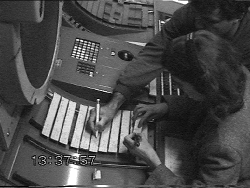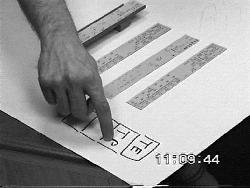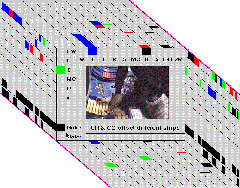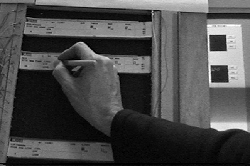| Challenging assumptions: Our use of multiple perspectives has led us to reassess established views. We argue that:
| * |
Replacing paper strips is more complex than simply copying the information they contain. |
| * |
Paper strips need not be less "modern" than mouse and keyboard interfaces. |
| * |
New on-line tools need not interpret everything controllers write in order to be useful. |
| * |
Controllers are not resistant to change; just user interfaces that do not support their work. |
|
Conclusion: Augmenting strips is an inexpensive, immediately-applicable way to preserve effective work practices and provide access to new on-line technology.
Recommendations:
| 1. |
Begin by testing augmented strips at a single sector, providing links between strips and RADAR. |
| 2. |
Analyze annotations to determine, under real use conditions, how they can support inter-sector communication and inform on-line tools. |
| 3. |
Provide controllers with a local environment for cooperatively evolving new interfaces. |
|
Publications:
 |
Mackay, W.E. & Fayard, A.L. (1997) HCI, natural science and design: A framework for triangulation across disciplines. DIS'97, Amsterdam. |
 |
Mackay, W.E. & Fayard, AL. (1997) Radicalement nouveau et néanmoins familier : les strips papier revus par la réalité augmentée. IHM'97, France. |
 |
Mackay, W.E. & Beaudouin-Lafon, M. (1998) DIVA: Exploratory data analysis with multimedia streams. CHI'98, Los Angeles, California. |
 |
Mackay, W.E. Fayard, A.L, Frobert, L. & Médini, L., (1998) Reinventing the familiar: Exploring an augmented reality design space for air traffic control. CHI '98, Los Angeles, California. |
|





